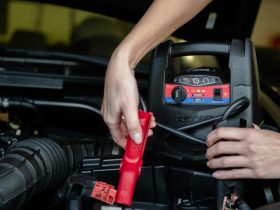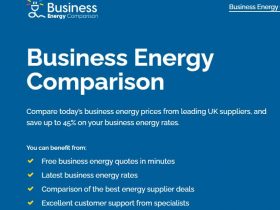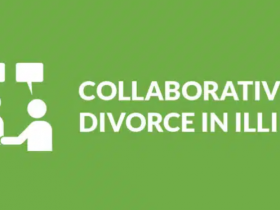Water bills can often be a significant source of expense for businesses. However, by analyzing and utilizing your previous water consumption data, you can identify patterns, implement efficiency measures, and ultimately reduce your bills. In this article, we will explore the importance of tracking and understanding your water consumption data, as well as practical steps you can take to achieve cost savings. Let’s dive in!
1. The Value of Water Consumption Data
Water consumption data provides crucial insights into your usage patterns and trends. By analyzing this data, you can identify areas of high consumption, pinpoint potential leaks or inefficiencies, and make informed decisions to reduce wastage. Here’s why your water consumption data is valuable:
- Identifying Usage Patterns: By examining historical data, you can identify usage patterns specific to your business. This information helps you understand when water consumption is highest, such as during peak production periods or certain seasons. Armed with this knowledge, you can devise strategies to optimize usage during these periods.
- Detecting Leaks and Inefficiencies: Consistent monitoring of water consumption data allows you to detect leaks or inefficiencies promptly. Sudden spikes in usage or continuous high consumption can indicate potential leaks, faulty equipment, or inefficient practices. Identifying and addressing these issues can lead to substantial cost savings.
- Establishing Baseline Metrics: Tracking your water consumption data over time enables you to establish baseline metrics and set realistic targets for reduction. By comparing current usage against historical data, you can gauge the effectiveness of your efforts and measure the impact of any implemented water-saving measures.
2. Steps to Utilize Water Consumption Data for Savings
Now that we understand the value of water consumption data, let’s explore practical steps you can take to leverage this information and achieve cost savings:
- Regular Monitoring: Begin by implementing a system to regularly monitor your water consumption. This can involve reading meters at consistent intervals, recording the data in a spreadsheet or specialized software, and maintaining a historical log. Regular monitoring ensures that you have accurate and up-to-date information to work with.
- Analyzing Consumption Patterns: Use your historical water consumption data to identify patterns and trends. Look for anomalies, such as sudden spikes or consistently high usage, and investigate the underlying causes. For example, if you notice increased consumption during non-operational hours, it could indicate leaks or unauthorized usage.
- Conducting Audits: Periodically conduct comprehensive water audits to assess your usage across different areas of your business. This involves examining individual processes, equipment, and facilities to identify opportunities for improvement. Consider engaging a professional water auditor to conduct a thorough assessment and provide expert recommendations.
- Implementing Efficiency Measures: Armed with the insights gained from your data analysis and audits, take proactive steps to improve efficiency. This can include implementing water-saving technologies, retrofitting equipment, modifying operational procedures, or educating employees on best practices. Small changes can add up to significant savings over time.
- Setting Targets and Monitoring Progress: Establish realistic water consumption reduction targets based on your historical data and implemented efficiency measures. Regularly monitor your progress towards these targets and make adjustments as necessary. Celebrate milestones and share achievements with your team to foster a culture of water conservation.
3. Leveraging Technology for Data Analysis
Advancements in technology have made data analysis more accessible and efficient. Several software solutions are available that can automate the process of tracking, analyzing, and visualizing water consumption data. These tools can provide real-time insights, identify anomalies, and generate reports, simplifying the decision-making process for water-saving initiatives.
4. Employee Engagement and Education
Reducing water consumption and achieving cost savings requires the participation and cooperation of your employees. Engage your workforce by educating them about the importance of water conservation and involving them in the process. Here are some key strategies for employee engagement:
- Training and Awareness: Conduct training sessions to educate employees on water-saving practices and the impact of their actions. Raise awareness about the importance of conserving water both at work and in their daily lives. Provide practical tips and resources to encourage responsible water usage.
- Employee Incentives: Consider implementing incentive programs to reward employees for their water-saving efforts. Recognize and appreciate individuals or teams that consistently contribute to reducing water consumption. Incentives can be in the form of monetary rewards, recognition, or additional benefits.
- Regular Communication: Maintain open lines of communication with your employees regarding water conservation initiatives. Share progress updates, success stories, and tips for further savings. Encourage employees to provide feedback and suggestions for improvement.
5. Water-Efficient Infrastructure and Equipment
Investing in water-efficient infrastructure and equipment is a proactive step towards reducing consumption and optimizing cost savings. Consider the following measures:
- Low-Flow Fixtures: Install low-flow faucets, aerators, and showerheads in restrooms and break rooms to reduce water usage without sacrificing functionality. These fixtures are designed to maintain adequate water pressure while minimizing wastage.
- Smart Irrigation Systems: If your business has outdoor landscaping or gardens, invest in smart irrigation systems that use weather data and soil moisture sensors to optimize watering schedules. This ensures that water is applied only when necessary, avoiding overwatering and reducing unnecessary usage.
- Equipment Upgrades: Evaluate your existing equipment and machinery to identify opportunities for water-efficient upgrades. For example, consider replacing older cooling systems or manufacturing equipment with newer models that have higher efficiency ratings and water-saving features.
6. Tracking and Measuring Success
To ensure the effectiveness of your water conservation efforts and to continually improve, it is essential to track and measure your progress. Implement the following strategies:
- Metering and Submetering: Install individual water meters or submeters to measure consumption in different areas of your business. This enables you to track usage patterns and identify areas of high consumption that require further attention.
- Data Analysis and Reporting: Utilize software or tools that can automate data analysis and generate comprehensive reports. Regularly review these reports to monitor your progress, identify trends, and make data-driven decisions.
- Continuous Improvement: Treat water conservation as an ongoing process rather than a one-time initiative. Encourage a culture of continuous improvement by regularly reviewing and updating your water-saving strategies. Engage employees in identifying new opportunities and implementing innovative solutions.
Conclusion
By harnessing the power of data, engaging employees, investing in water-efficient infrastructure, and consistently tracking progress, businesses can significantly reduce their water consumption and lower their bills. From analyzing historical data to implementing efficiency measures and leveraging technology, every step taken toward water conservation contributes to a sustainable future and financial savings. Embrace the journey from data to savings and make a positive impact on your bottom line and the environment.
Read More Articles: Websites like Ruble





